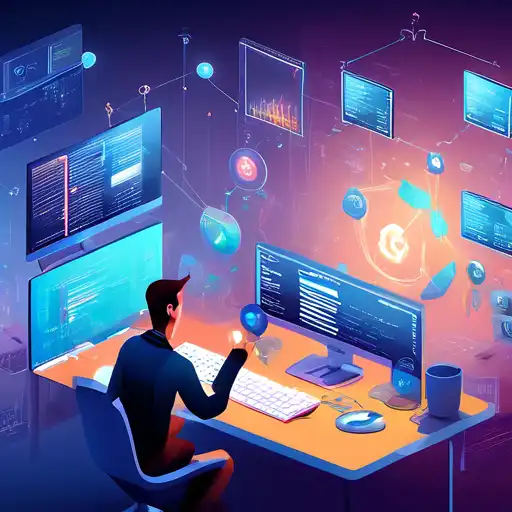Introduction to Software Development Trends
As we navigate through the year, the software development landscape continues to evolve at a rapid pace. Staying ahead of the curve is crucial for developers, businesses, and tech enthusiasts alike. This article delves into the most significant software development trends that are shaping the industry this year.
1. Artificial Intelligence and Machine Learning Integration
Artificial Intelligence (AI) and Machine Learning (ML) are no longer just buzzwords but have become integral to software development. From automating mundane tasks to enhancing user experiences, AI and ML are setting new standards in software innovation.
2. The Rise of Low-Code and No-Code Platforms
Democratizing software development, low-code and no-code platforms are empowering non-technical users to build applications. This trend is accelerating digital transformation across industries by reducing the dependency on traditional coding skills.
3. Progressive Web Apps (PWAs) Gaining Momentum
PWAs offer the best of web and mobile applications, providing offline capabilities, fast loading times, and an app-like experience. Their popularity is surging as businesses seek cost-effective solutions to reach wider audiences.
4. Blockchain Beyond Cryptocurrency
Blockchain technology is finding its way into various sectors beyond cryptocurrency, including healthcare, finance, and supply chain management. Its ability to ensure transparency and security is revolutionizing software development practices.
5. The Importance of Cybersecurity
With the increasing number of cyber threats, integrating robust cybersecurity measures into software development processes has become non-negotiable. Developers are prioritizing security from the initial stages of development to safeguard sensitive data.
6. Cloud-Native Development
Cloud-native development is on the rise, enabling developers to build scalable and flexible applications. Leveraging cloud services allows for faster deployment and easier management of applications across different environments.
7. The Growth of DevOps and Agile Methodologies
DevOps and Agile methodologies continue to dominate the software development lifecycle, promoting collaboration, efficiency, and faster delivery of high-quality software products.
8. The Expansion of Internet of Things (IoT)
The IoT ecosystem is expanding, with more devices getting connected every day. Software developers are focusing on creating applications that can seamlessly integrate and communicate with a myriad of IoT devices.
9. Focus on User Experience (UX) Design
User experience has taken center stage in software development. Developers are investing more time and resources into designing intuitive and engaging interfaces that meet user expectations.
10. Sustainable Software Development
Sustainability is becoming a key consideration in software development. Developers are adopting practices that reduce energy consumption and minimize the environmental impact of digital products.
Conclusion
The software development industry is witnessing transformative changes, driven by technological advancements and changing user demands. By keeping an eye on these trends, developers and businesses can stay competitive and deliver innovative solutions that meet the needs of the digital age.
